Blog 3
Hello, candle family!
When I first started creating candles, I had this idealized vision of my tiny apartments filled with calming lavender and soft, flickering flames, all of which were fueled by pure essential oils.
You do realize that essential oils are natural? That has to be the best way to make candles.
After a few wax spills, lacklustre scent throws, and a good deal of frustration, I now have a very different and more balanced perspective.
This post will answer your questions about how essential oils actually work in candle making, how much you need, how they differ from fragrance oils, and which is truly worth your money (and wax).
Let’s pour into it.
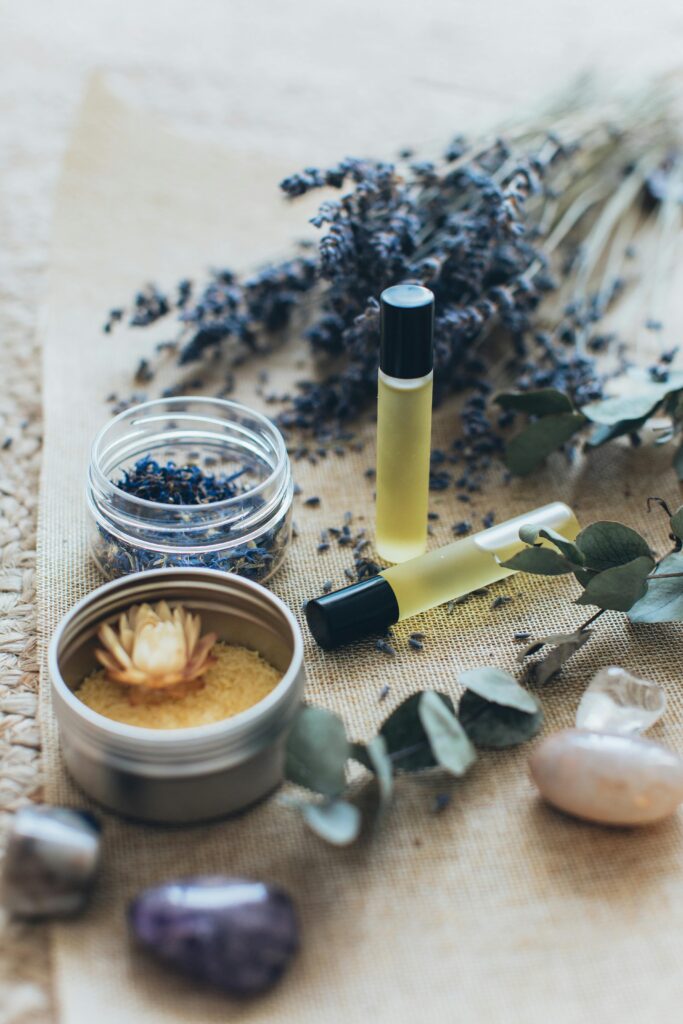
What are essential oils and their natural origins
Ever wondered what makes your candle smell like a real lavender field instead of a chemical approximation? That’s the magic of essential oils.
Essential oils are concentrated plant extracts that are obtained by mechanical pressing or distillation, as opposed to artificial fragrances. They are the aromatic compounds that give citrus, eucalyptus, and roses their unique scents; they are literally the essence of plants.
These oils come straight from natyeure’s laboratory. Lavender essential oil is extracted from lavender flowers. Lemon oil comes from lemon peels. Eucalyptus oil? You guessed it—eucalyptus leaves.
What makes them special is their complexity. Each essential oil contains hundreds of different compounds that create a rich, authentic aroma that synthetic fragrances simply can’t duplicate.
Benefits of using essential oils in candles
The benefits go way beyond just “smelling nice.”
First of all, because essential oils are natural substitutes for artificial fragrances, many candle enthusiasts favour them. Burning a candle with high-quality essential oils fills your space with scents from plants rather than synthetic compounds.
Numerous essential oils are well-known for their medicinal qualities. Peppermint energises, eucalyptus clears the mind, and lavender encourages relaxation. These qualities, when applied to candles, can turn your home into a haven for self-care.
Essential oil candles often provide a cleaner burn too. Without synthetic additives, there’s typically less soot and fewer potential irritants.
The scent profile is another huge win. Essential oil candles offer complex, authentic aromas that evolve as they burn—just like a fine perfume has top, middle, and base notes.
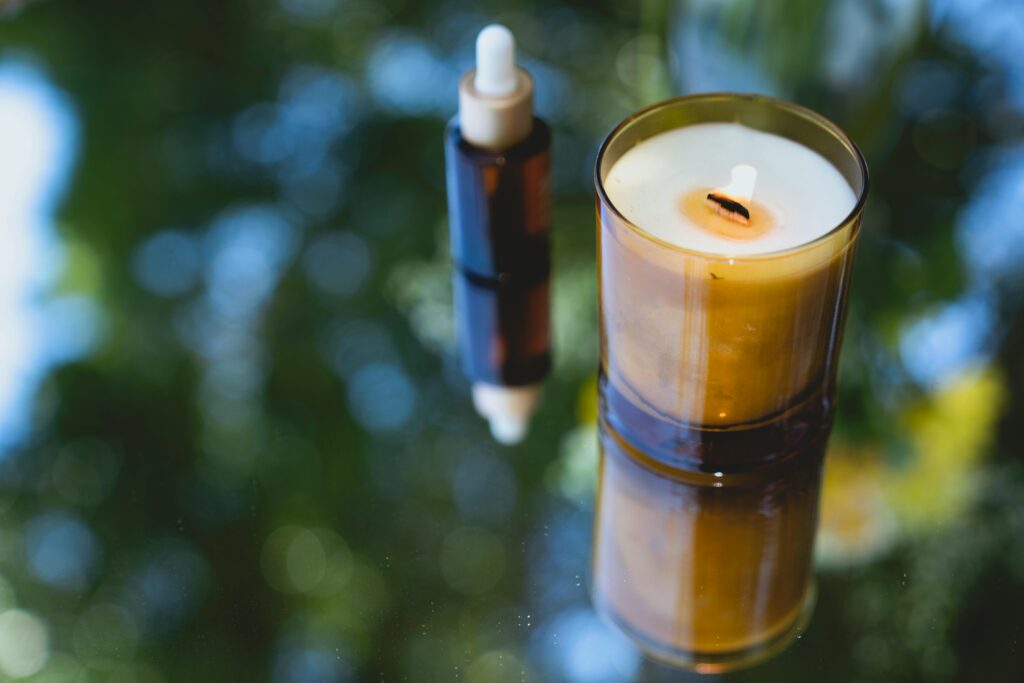
My First Time Using Essential Oils in Candles
I’ll always remember the first batch of “100% natural” candles I made. I used soy wax, a lavender essential oil that I spent a lot of money on, and a lot of hope.
I poured it, let it cool, cut the wick, and lit it, but nothing happened. I had to lean over the candle to smell anything. The hot throw was almost nonexistent, and the cold throw was very weak. It smelt great in the bottle, but what happened when it got hot? It went away.
That was when I learnt my first big lesson:
Not all essential oils work well in candles.
Unlike synthetic fragrance oils, essential oils should not be used in high heat. You won’t be able to smell them before your candle even begins to burn because some of them quickly evaporate or burn off.
When heated, some oils, such as citrus oils, degrade, but others, like patchouli or cedarwood, remain potent. Even so, they’re not particularly potent; rather, they resemble a soft whisper rather than a strong smell.
How much essential oil do you need for candles?
This is among the most challenging sections. Despite their potency, essential oils don’t always mix well with wax, particularly if the wax can only hold a small amount of them.
This is what I learnt:
• The safe amount to use is 6–10% of your wax weight.
• The sweet spot for essential oils is About 5% to 7%, depending on the type of wax and the quality of the oil.
Also, not all essential oils are the same. Cheaper ones often have fillers or are too watered down, and those don’t work at all in candles.
Essential Oils vs. Fragrance Oils – What’s the Difference?
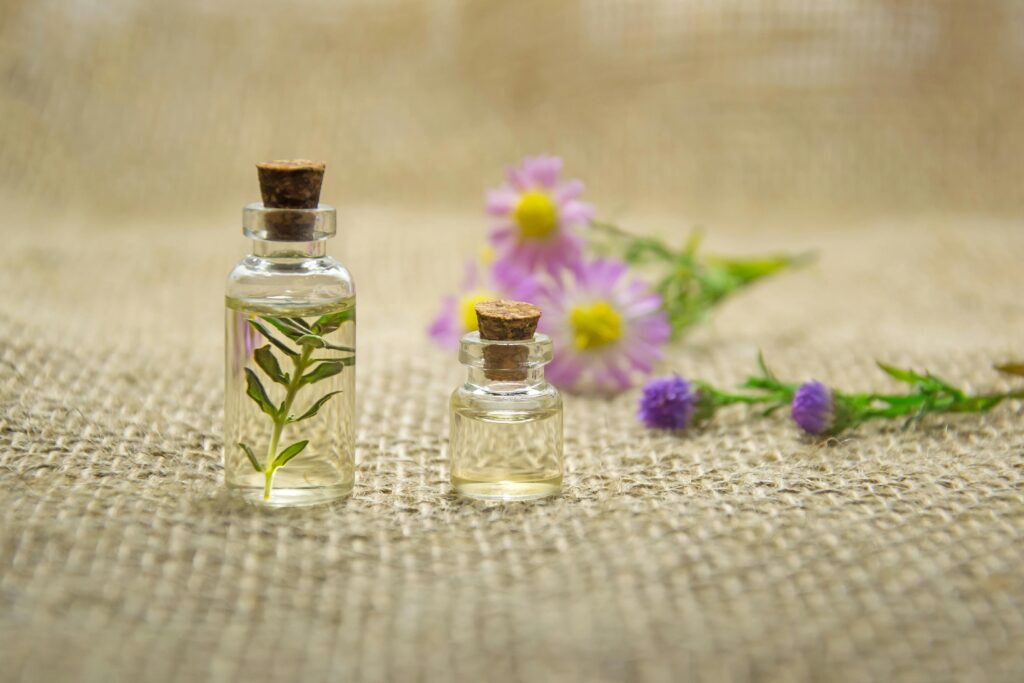
This was another eye-opener for me. Let’s break it down simply:
| Essential Oils | Fragrance Oils | |
| Made From | Natural plant extracts | Lab-created (can be natural + synthetic) |
| Scent Strength | Light to moderate | Strong (especially hot throw) |
| Burn Stability | Not always stable | Designed for high heat |
| Cost | More expensive | More affordable |
| Customization | Limited scent profiles | Endless blending options |
Fragrance oils are specifically designed for candles. That means:
- Better scent throw (both hot and cold)
- Consistency across batches
- More complex, creative scent blends
And before I got all purist about it — yes, many fragrance oils do contain natural essential oil components. But they’re stabilized and balanced with synthetics to perform better
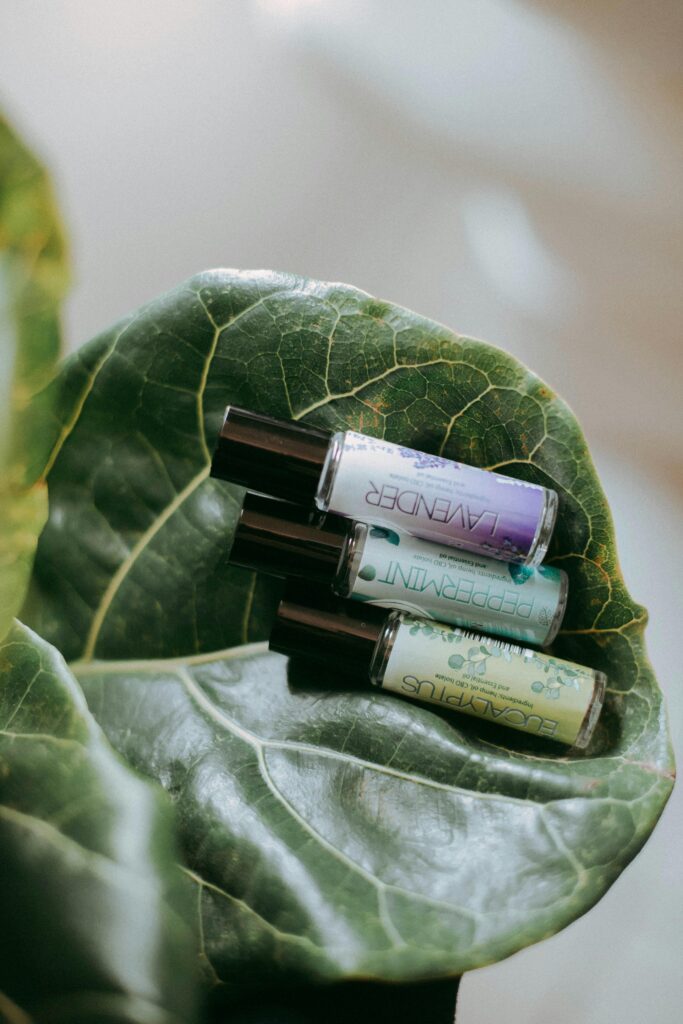
Popular essential oils for candle making
Not all essential oils work equally well in candles. Here are some top performers:
Lavender: The ultimate stress-reliever. It blends beautifully with other scents and maintains its character when heated.
Eucalyptus: Refreshing and clarifying. Perfect for creating an energizing atmosphere in your home office.
Citrus oils: Lemon, orange, and grapefruit add brightness and positivity. They’re uplifting and pair well with almost anything.
Cedarwood: Brings a grounding, woody base to candles. It’s excellent for creating cozy vibes during colder months.
Rosemary: Herbaceous and stimulating. It’s great for focus and concentration.
Patchouli: Earthy and sweet, it adds depth and staying power to candle scents.
The secret to great essential oil candles is knowing how to blend these oils to create balanced, complex aromas that fill your space with natural goodness.
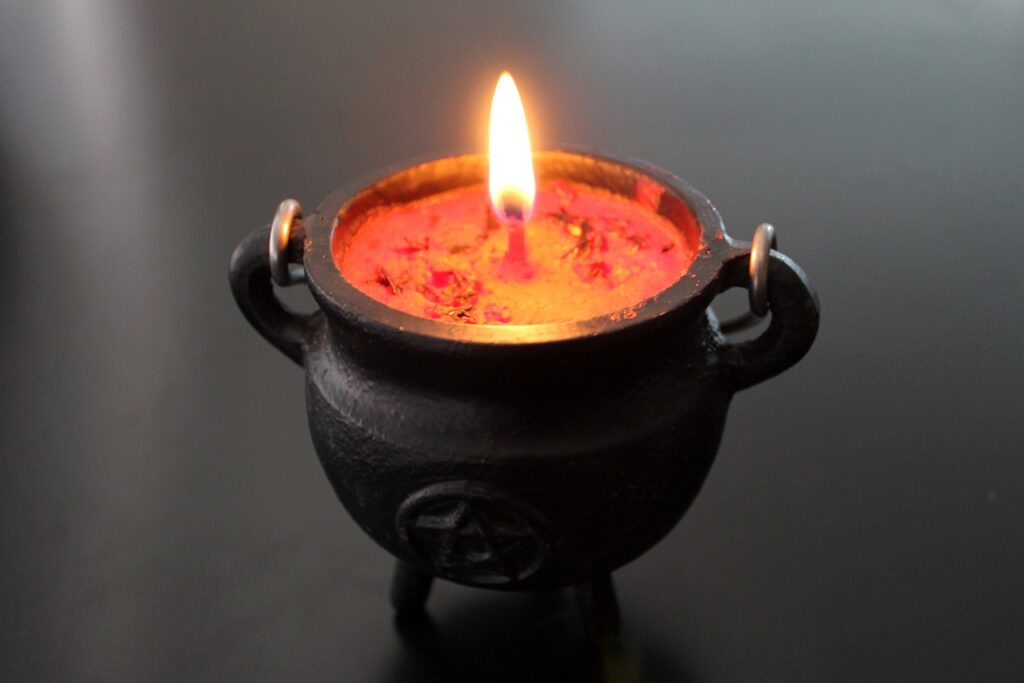
Follow the Scent You Love
Making candles is ultimately both an art and a science. Don’t feel under any obligation to select a single “right” direction. Try both fragrance and essential oils. Mix and match. Use your nose as a guide.
Whether you’re creating a soothing lavender meditation candle or a fiery holiday blend with clove and orange:
The best candle is the one that makes you feel something.
Happy experimenting,
Sham

